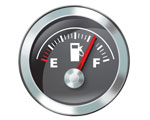 Go to main content
Go to main content
Archive Website of the UK government
Please note that this website has a UK government accesskeys system.
Main menu
Page menu
Motoring

Fuel consumption testing scheme

The fuel consumption testing scheme gives car buyers the information they need to compare fuel consumption of different models of a similar type. Find out more about the fuel consumption test and what it involves.
Fuel consumption test
The internationally-agreed test is in two parts: urban cycle and extra-urban cycle.
The cars tested have to be run in and must have been driven for at least 1,800 miles (3,000 kilometres) before testing.
Urban cycle test explained
The urban test cycle aims to simulate driving conditions in and around town. It is carried out on a rolling road in a laboratory with an ambient temperature of 20 degrees Celsius (°C) to 30°C. The test begins immediately from a cold start, that is, where the engine has not run for several hours. The cycle consists of a series of:
- accelerations
- steady speeds
- decelerations
- idling
The maximum speed in the test is 31 miles per hour (mph) or 50 kilometres per hour (km/h), average speed 12 mph (19 km/h) and the distance covered is 2.5 miles (4 kilometres).
Extra-urban cycle test explained
The extra-urban cycle aims to simulate town driving on sections of faster road such as dual carriageways and national speed limit areas. This cycle is conducted immediately following the urban cycle and consists of:
- roughly half the test at steady-speed driving
- some accelerations
- some decelerations
- some idling
The maximum speed in the test is 75 mph (120 km/h), average speed is 39 mph (63 km/h) and the distance covered is 4.3 miles (7 kilometres).
Combined fuel consumption figure
The combined fuel consumption figure is the urban and the extra-urban cycle together. It is an average of the two tests, weighted by the distances covered in each one.
Bi-fuelled vehicles
Vehicles that are designed to run on liquefied petroleum gas (LPG) or compressed natural gas (CNG) and petrol need to be tested on both fuels. Because of this, two sets of figures will be shown for the vehicle. One set is for the vehicle running on petrol and another for the vehicle running on gas.
